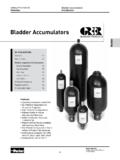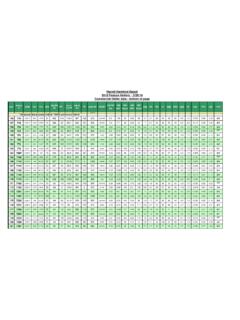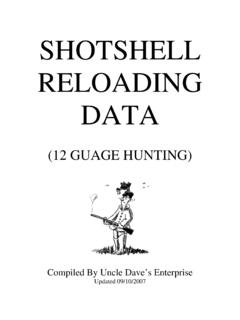Transcription of AMAP Refresher Course - Unlimited Online …
1 Approved Medication Assistive Personnel amap Refresher Course This Course is for nursing assistants and enables them to pass certain medications . Reviewed April 2018, Expires April 2020. Provider Information and Specifics available on our Website Unauthorized Distribution Prohibited 2018 , , , LLC. By Melissa K Slate, RN, MS. By the end of this Refresher Course , the nursing assistant will be able to: 1. Identify the five rights of medication administration 2. Apply knowledge to patient situations involving medications 3. Demonstrate safety measures involved with medication administration. The purpose of this Course is to provide the clinician with a Refresher Course in assisting patients to take their medication.
2 Safety measures will be presented along with general documentation information. Space does not allow the inclusion of every applicable law for every state regarding the administration or the assisting of a patient to take their medications. It is the responsibility of the reader to know their state and facility regulations and apply them to their clinical situation. Delegation is the handing over of specific tasks, usually to a subordinate. It is the assignment of authority and responsibility to another person to carry out specific activities or functions. Medication administration is the assistance of a person in the ingestion, application, or inhalation, of medications including both prescription and non- prescription medications.
3 Assisting your patient to take their medications can be an important intervention in helping them to maintain or improve their current level of health. However, this important function is not without a vast amount of responsibility and should not be taken lightly. First, you are responsible for helping to keep your patient safe. Never accept or agree to do something that you know is against facility or state regulations. It could endanger your patient, as well as bring professional ramifications for both you and the supervising RN and the facility. If you are uncomfortable with something, voice your concerns with the RN. If after discussing the situation you are still uncomfortable, seek the advice and clarification of a supervisor before proceeding.
4 Some states do not allow nursing assistants or other UAP. (unlicensed assistive personnel) to give medications by certain routes such as nebulizers or injections. The RN is responsible for delegating in a proper manner, but if you feel incapable of performing a task for any reason or need more information, it is also your responsibility to speak up. The first principle of medication administration is the principle of the five (or in this case six ) rights. If you understand and practice these rights every time that you assist with medication administration you have went a long way toward eliminating errors. The rights of medication administration are: The right drug. Compare the medication administration record (MAR).
5 With the pharmacy label. If the two do not agree exactly, contact the RN. for further assistance. Sometimes the pharmacy label may have the generic name and the MAR the brand name. Never assume they are the same medication verify with a drug book or check with the RN. Some medications have names that look and sound similar to other meds but are for vastly different purposes and can have fatal results if a mistake is made. Right Dosage: Compare the MAR to the pharmacy label. The two should match exactly. If not, contact the RN. The Right Time: Follow the facility's time schedule or the specific time noted on the MAR. Medications should be given no earlier than 30. minutes before the scheduled time or 30 minutes after the scheduled time.
6 If the directions on the MAR and the facility administration time differ, the time on the MAR takes priority. Some drugs have special instructions such as give before, after meals, or at bedtime. Some medications are PRN medications, meaning they are only given when needed. The MAR should give clear guidelines for the administration of these medications. If there is any doubt about the need for these medications, contact the RN. Right Route: Double-check the MAR to verify the route of drug administration. Review the MAR and Pharmacy label to be sure that they match. The oral route is the medication route most commonly used, but there can be other routes. If there is any question, contact the RN.
7 Never administer medications by a route other than specified in the MAR. Right record: Make sure that the resident, pharmacy label, and the medication label all match. Initial the medication given at the correct time. Make sure that you sign the MAR at the bottom. Common abbreviations that are used in writing orders for prescriptions and medication labels include: ac : before meals Ad lib: freely AM: morning ASA: Aspirin BM: bowel movement BS: blood sugar bid: twice a day BP: blood pressure cap: capsule : with cc: cubic centimeters dc: Discontinue Disp: dispense DNR: Do not resuscitate. This is a specific order not to revive a patient artificially if they succumb to illness. If a patient is given a DNR order, they are not resuscitated (no CPR) if they are near death and no code blue is called.
8 Ec: enteric coated elix: elixir fl: fluid gtt: drop hs: At hour of sleep, bedtime HTN: hypertension (high blood pressure). L: liter Mg: milligram MAR: medication administration record ml: milliliters NTG: nitroglycerine npo: Nothing by mouth. For example, if a patient was about to undergo a surgical procedure requiring general anesthesia, they may be required to avoid food or beverage several hours prior to the procedure. O2: oxygen : Right eye : Left eye : Both eyes oz: ounce P: Pulse, recorded as part of the physical examination. It is one of the vital signs and reflects the number of heart beats per minute. pc: after meals po: by mouth Post : after PM: evening Pre : before prn: as needed q: every q am: every morning qd: every day qh: every hour q2h: every 2 hours q3h: every 3 hours q4h: every 4 hours qid: four times daily qhs: every night or at bedtime qpm: each evening qod: every other day R: respirations : without SL : sublingual Sol: solution Ss: one half Stat: immediately Susp: suspension Syr: syrup Supp: suppository T: temperature It is one of the vital signs.
9 Tab: tablet Top: topically tid: three times a day TPR: temperature /pulse /respirations tsp: teaspoon tbsp: tablespoon UA or u/a: urinalysis Ung: ointment VS: vital signs (Temperature, pulse, respirations, blood pressure). Wt: weight Documentation Documentation could be called the 7th right' of medication administration. Whether medications are taken by a patient, the aide helps the patient to take the medications, or the nurse gives the medications, they must be properly documented on the MAR. There are many reasons for the need for clear, concise charting. First the patient's medical record is also a legal document and in a court of law, if it isn't charted it wasn't done. It is also the only way to be certain of clear communication between all members of a patient's health care team and provides an up to date record of the patient's status.
10 Pointers for documentation: Never under any circumstance, chart a medication before it is given. When giving PRN medications, always make sure that the reason for giving the medication is clearly documented. For example Patient complains of headache . If the patient's symptoms seem in any way severe, unusual, or out of the ordinary notify the nurse. If your instinct tells you something is wrong, ask the patient a little more about how they are feeling. Taking a few extra moments, instead of just giving the medication and going on may save a life. For example, headache can be a sign of stroke. Use neat legible writing. Do not erase or use white out. If you make a mistake draw a single line through the mistake so that it is still readable and initial beside the error and date it.














